Healthcare Data Security is crucial to protect the information from any unauthorized parties, loss, destruction, and more. Lack of proper data protection can expose healthcare entities to numerous risks, which include hefty penalties, loss of client trust, and loss of business.
In the following blog, the reader will learn the reasons for such a high concern for data protection in healthcare organizations. Therefore, it will include identifying the key benefits of data security in healthcare facilities.
What Is Healthcare Data Security?
Healthcare data security aims to protect the data, computers, and networks that healthcare providers and other organizations use. To implement healthcare data security, cybersecurity measures must be incorporated to promote healthcare data confidentiality, integrity, and accessibility.
Moreover, the Health Insurance Portability and Accountability Act (HIPAA) standards are among the key factors driving the need for data protection in healthcare. The standards give broad guidance about how to address such healthcare data.
Importance of HIPAA for Data Security in Healthcare
HIPPA is important for data security in healthcare because:
1. Federal Protection:
HIPAA establishes a level of privacy and security of health information at the federal level.
2. Simplifies Healthcare:
It facilitates a framework for performing healthcare transactions, minimizes fraudulent activities, and helps control expenses.
3. Encourages Digitization:
HIPAA encourages the replacement of paper charts with electronic health records.
4. Patient Privacy:
It has security provisions that guard vital health information.
5. Patient Control:
Enables patients to control with whom their health information is shared.
Major Risk Factors in Healthcare Data Security
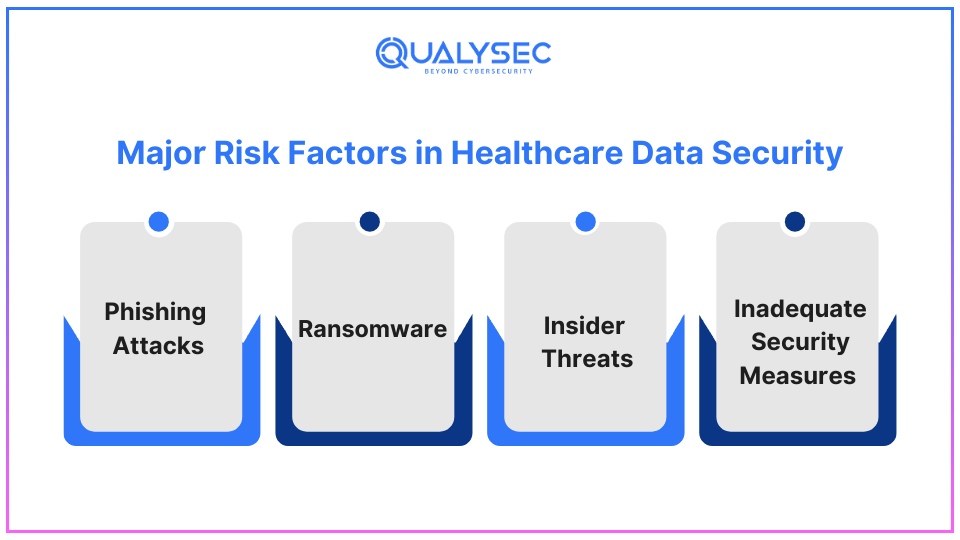
Healthcare data security is concerned with many risk factors contributing to the insecurity of the patient’s information. Some of the significant risk factors include:
1. Phishing Attacks:
Phishing is a standard method through which cybercriminals attack healthcare organizations by posing as legitimate parties and consequently gaining access to login credentials or engaging employees in downloading malware. Hence, the attacks result in unauthorized access to the patient’s details and records.
2. Ransomware:
Ransomware is a form of malware that restricts access to a healthcare organization’s data to pay a ransom. This can compromise patient care and result in data insecurity.
3. Insider Threats:
Any person who has access to the patient data can deliberately or involuntarily breach data protection via manipulation of the data or social engineering.
4. Inadequate Security Measures:
The poorly protected healthcare organization becomes the target of cybercriminals since it does not have sufficient protection against intruders or has outdated security systems.
Healthcare Data Security Challenges
There are many challenges that your organization is likely to encounter if it is involved in the process of data security in healthcare for patient information. The common challenges are:
1. The complexity of the healthcare IT environment:
A complex of interconnected systems, applications, and devices and many old and vulnerable systems create significant challenges for providing consistent security in a network environment.
2. The constant evolution of cyber threats:
Pioneering hackers always seek new ways to penetrate organizations’ defenses and exploit open weaknesses. Thus, it becomes the organization’s responsibility to conduct penetration testing to enhance its defense structures regularly.
3. The human factor:
Despite having enough security measures in place, negligence may strike at any given time through employee mishandling information, such as falling prey to phishing attacks, sharing weak passwords, mishandling patient details, or failing to create awareness about cybersecurity.
Healthcare Data Security Standards
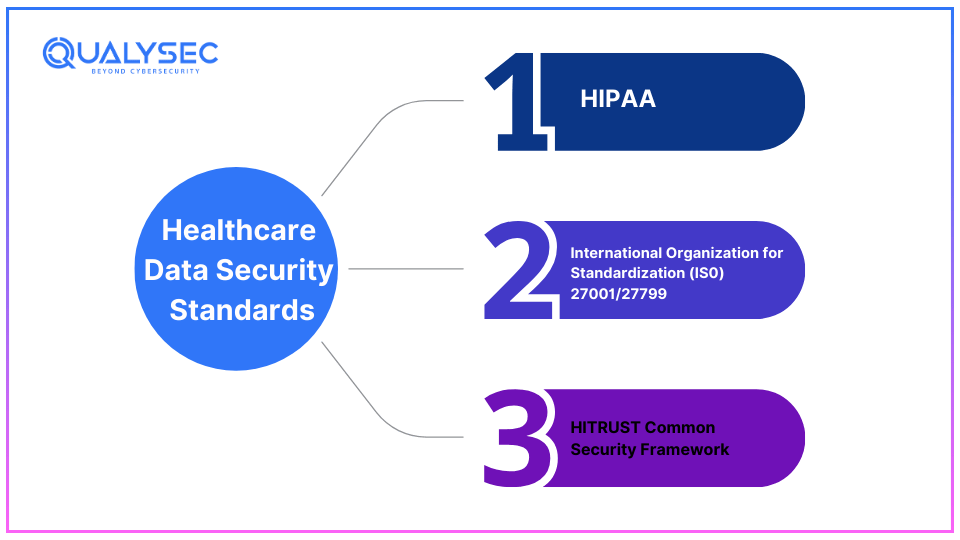
Healthcare data security standards are:
1. HIPAA
The Health Insurance Portability and Accountability Act helps enhance accountability and health insurance policies. First, the government attempted to standardize medical patient charts and started the HIPAA privacy regulation and social security rules.
2. International Organization for Standardization (IS0) 27001/27799
To enhance the security of medical records, two essential international security standards should be adopted to avoid the leakage of sensitive medical data. ISO 27001 provides the comprehensive requirements for implementing an information security management system. While ISO 27799 offers guidelines on how to work within data flow in a healthcare organization.
3. HITRUST Common Security Framework
HITRUST CSF is an international framework that provides security compliance with international standards for ISO and HIPAA. Buyers and suppliers spend time and resources preparing to respond to audits, while covered entities can easily do this, saving their time.
Best Practices for Securing Healthcare Data
1. Set up the use of Role-Based Access Control (RBAC)
To maintain healthcare data security, ensure that the users have only the required permissions to access the information. RBAC makes it possible to limit workers’ access only to the materials they need for their work roles and no further. Thus, by providing different roles and responsibilities, the risk of unauthorized access regarding data privacy in healthcare can be managed effectively.
2. Visitor Logging and Auditing
Record all access occasions and analyze the logs from time to time. Frequently reviewing and analyzing access logs makes it easier for organizations to point out any irregularities, suspicious events, or attempted break-ins. Therefore, daily scanning of access logs, combined with regular VAPT testing will help you notice any security issues that may have occurred and address them before it is too late.
3. Protect data in motion and data in use
Prevent unauthorized access to patient data by employing proper encryption methods. Encryption transfers data between different systems and stores it in servers or other equipment. For example, if the hacker gains access to the encryption data, they cannot decipher it without the correct decryption keys. Hence, data encryption is another protection against unauthorized usage and access to sensitive patient information.
4. Enforce Multi-Factor Authentication (MFA)
Enhance security through the inclusion of multi-factor authentication. MFA entails using two or more verification factors in authentication regarding passwords, biometric data, or tokens. Therefore, even if the password is intercepted somehow, the intruders cannot access the accounts, thereby protecting sensitive data.
5. Update Systems and Patch Them
Ensure that all systems and software are up to date. Update the programs to their current version to avoid existing security-threatening loopholes exploitable by cybercriminals. They contain known security holes, and regular updates and patches guarantee you can apply the fixes immediately.
How Qualysec Helps Protect Healthcare Data?
Qualysec is a cybersecurity firm that provides cybersecurity solutions to the healthcare sector to protect health-related data. By providing a detailed view of the regulatory environment and the most dangerous cyber threats, Qualysec assists healthcare organizations in protecting patient information and adhering to legal requirements.
Healthcare-Specific Penetration Testing:
Qualysec performs penetration testing that aims to discover weaknesses in the health sector and the technology facilities being used, such as the EHR, medical devices, and the network. Thus, through emulating actual attacks, Qualysec aids organizations in knowing the gaps in their security systems so that hackers cannot take advantage of them.
Download a Sample Report of penetration testing by clicking the link below!
Latest Penetration Testing Report

Compliance Consulting:
Qualysec can help you meet and sustain compliance with various governing regulations for the healthcare industry, such as HIPAA and GDPR. These may include the identification of gaps, risk evaluations, and formulation of security policies and measures.
Continuous Monitoring and Threat Detection:
Qualysec offers ongoing security testing services to assess and detect security threats in real time and respond to security-related issues. Such measures ensure that any new threats in a healthcare organization are fought while protecting secure data.
Talk to our Cybersecurity Expert to discuss your specific needs and how we can help your business.
Conclusion
Healthcare data are confidential information that requires protection in the contemporary world, where advanced technology is prevalent. Connected devices and EHRs are transforming the healthcare industry and patient data; hence, security within healthcare organizations is required. HIPAA standards for healthcare industries work as reference incidences for protecting data. Henceforth, industries need a comprehensive understanding of the challenges, risks, and success factors of protecting healthcare data security.
FAQs
1. What is the biggest threat to the security of healthcare data?
A. The most significant risk in protecting healthcare data is phishing. Phishing is a standard attack where cybercriminals attempt to deceive healthcare employees into disclosing their login credentials or installing malicious software, enabling access to patients’ information.
2. How do you secure healthcare data?
A. One can secure healthcare data by following the best practices such as:
- Regular risk assessment
- Encrypting data
- Implementing multi-factor authentication
- Update Systems and Patch
3. How does HIPAA improve data security in healthcare?
A. HIPAA enhances data security in healthcare by establishing uniform guidelines for safeguarding information in health. It requires administrative, physical and technical measures to protect the identification, collection, transmission, storage and analysis of patient information. Additionally, HIPAA contains provisions under which healthcare organizations must inform the actors and authorities about the data breach so that relevant persons and the public will learn about this incident.
Ensure your healthcare solution is globally compliant.
Qualysec helps you meet HIPAA, FDA, ISO, and more. Contact us today!
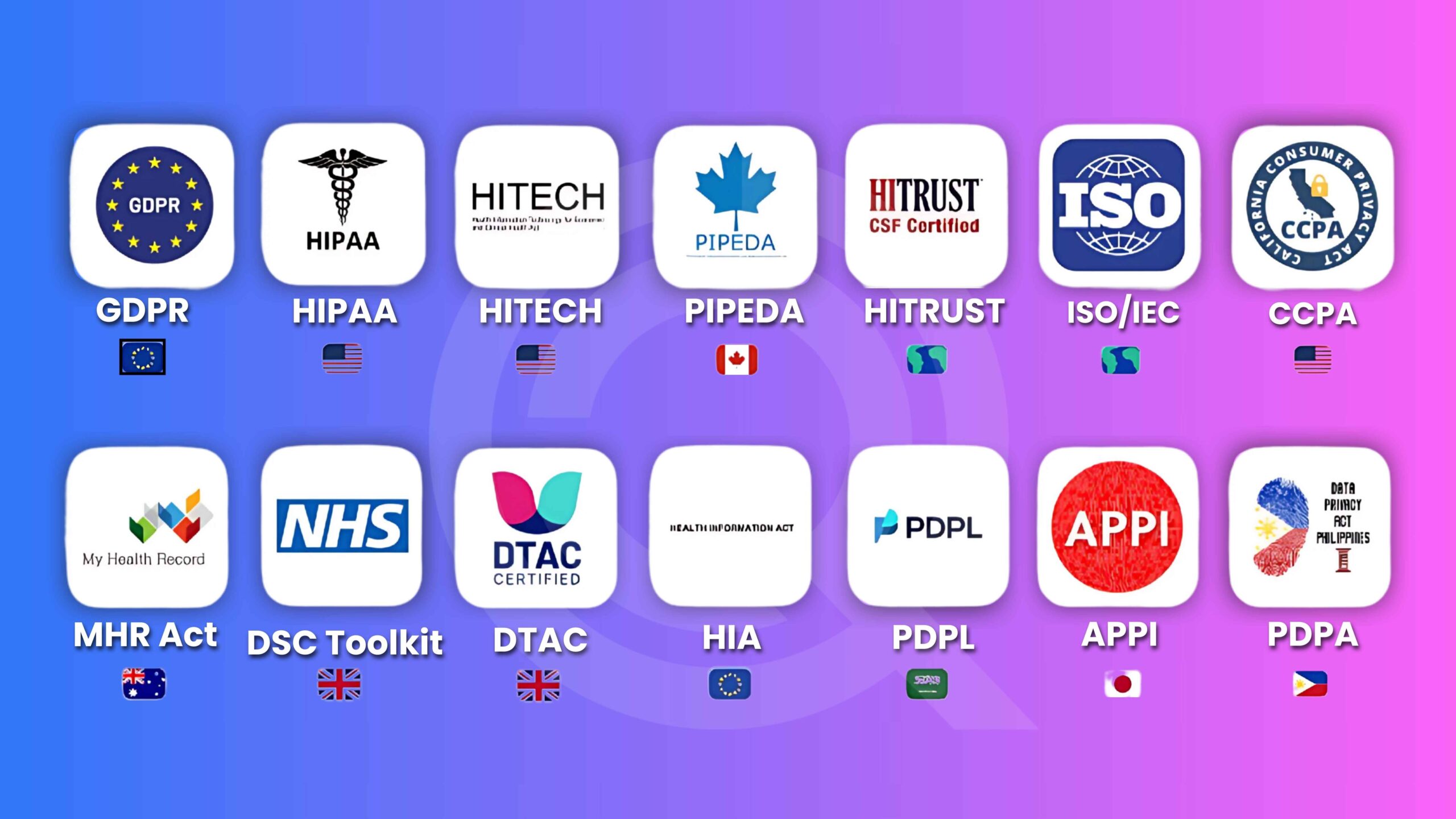









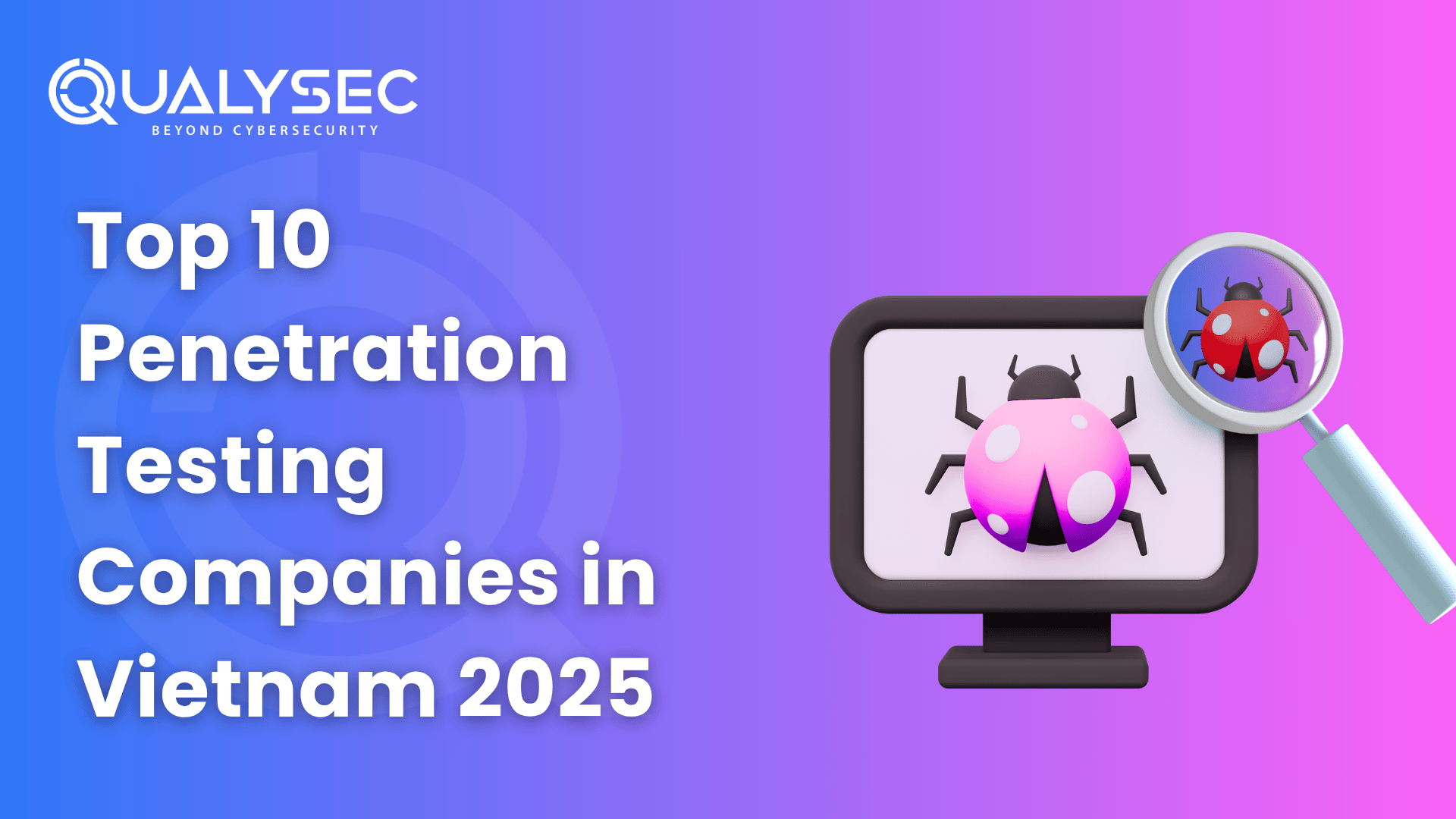
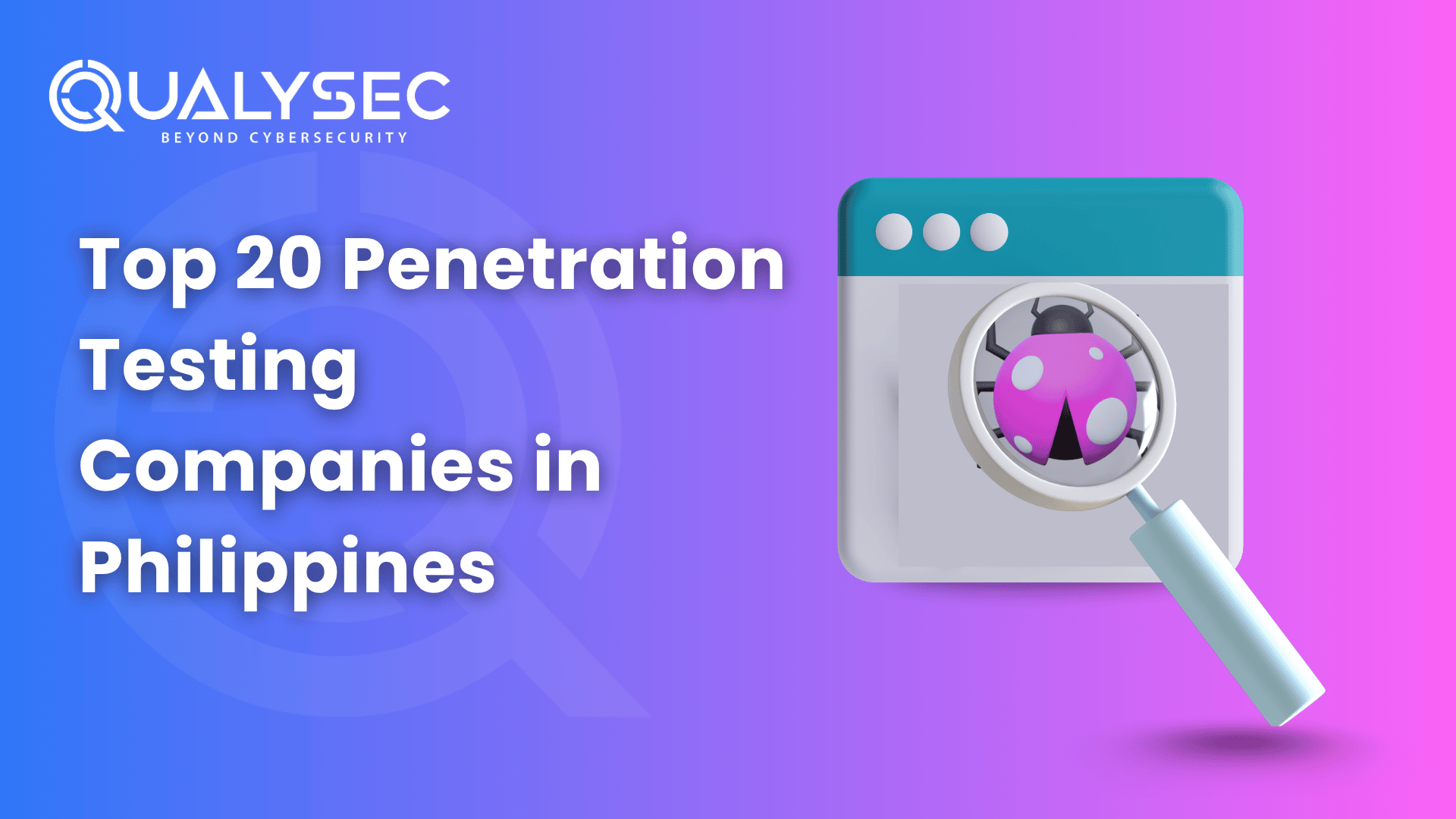
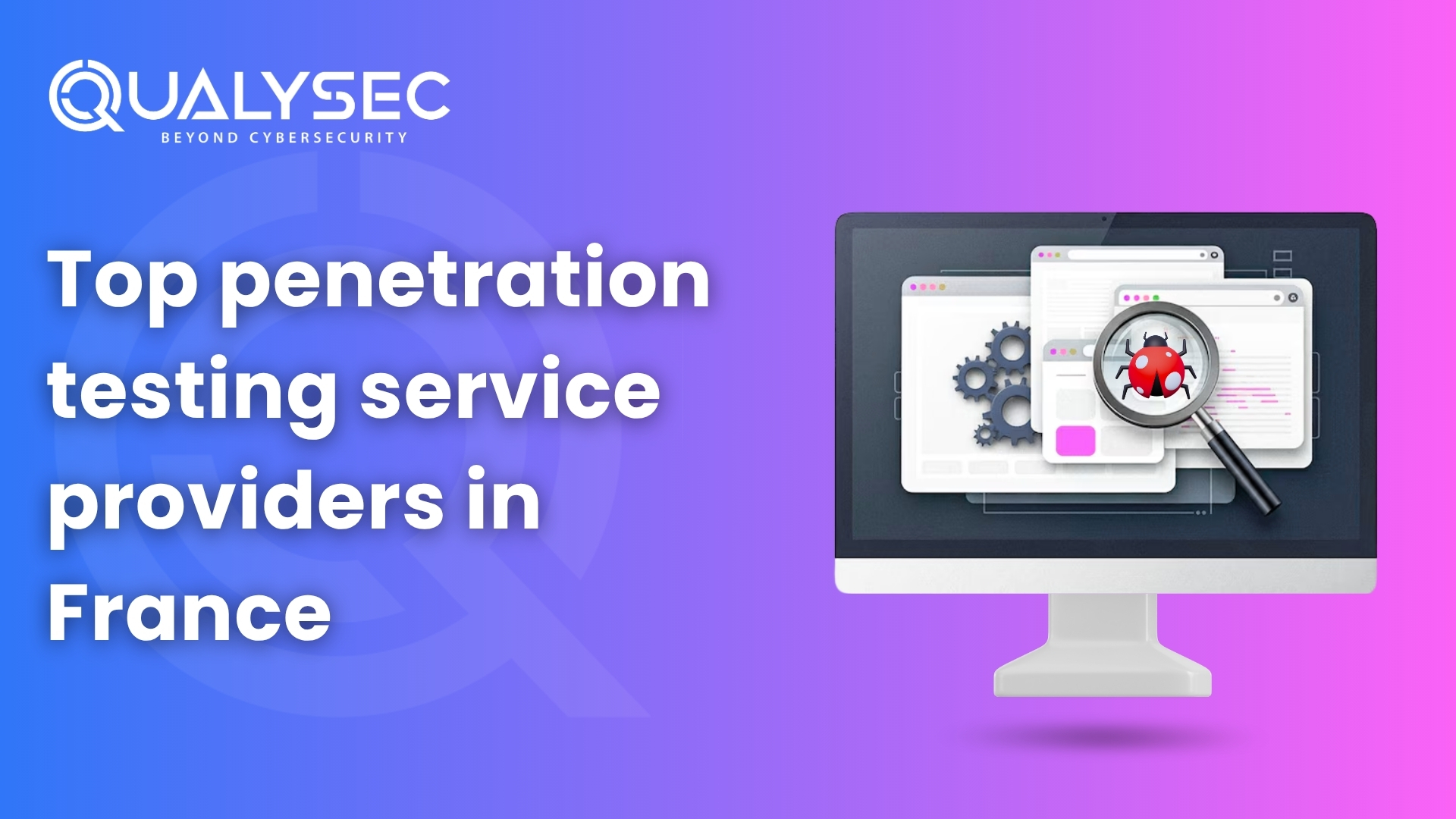






































































































































































































































































































































0 Comments